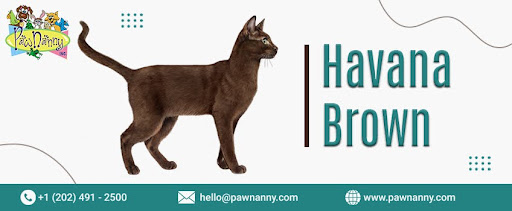
Himalayan
Size: 17-19 inches
Weight: 7-12 pounds
Hypoallergenic: No
Lifespan: 9-15 years
Behavior
The Himalayan cat displays characteristics that include affectionate behavior, plus a state of relaxed tranquility. The hybrid combination of Persian and Siamese cats makes Himalayans exhibit Persian relaxation together with Siamese smart behavior. These felines prioritize being with others, making human relationships and friendships with pets equally important to them. Himalayans find their happiest moments in homes where people show love because they continuously look for contact with their owners or during an overnight pet house sitting service Fairfax. Himalayan cats' soft, melodic tone expresses itself through meows to communicate their desire for food, affection, or playtime with people.
These cats have enough energy for brief play periods, although excessive daily activity is not their natural habitat. They love interactive toys and puzzle games with feather wands, which exercise their minds. Their playful character does not prevent these cats from enjoying relaxed spots to spend their nap time. Strangers make Himalayan cats uncomfortable, while their preferred lifestyle is a peaceful home environment. They need orderly households because loud noises accompanied by unexpected changes trigger their anxiety.
Himalayans express deep affection through their desire to snuggle with the people they love, including during Overnight Pet Sitting. Their behavior displays that they never push for too much attention, but they value the privacy of others. The Himalayan cat needs indoor space only because of its sensitive physical condition. That affectionate Himalayan cat makes an excellent companion for families, single individuals, and elderly people who seek a devoted and gentle friend.
History
The Himalayan cat breed emerged through selective mating between Persian and Siamese cats to unite Persian-type silky fur with Siamese color points and blue eye coloring. In the 1930s, United States and United Kingdom breeders created Himalayan cats by attempting to mix Persian and Siamese characteristics. Historical records confirm Marguerita Goforth as the first American breeder who attempted breeding in the 1950s. British and American breeders began simultaneous attempts to develop the same cat type simultaneously. Through their work, they created a cat that inherited Persian body structure, long fur, and docile nature, yet displayed the Siamese distinct color-point characteristics.
The Cat Fanciers' Association (CFA) officially acknowledged the Himalayan breed in 1957 when it issued recognition using the name derived from Himalayan rabbit color patterns. The rise of similarities between the Himalayan and Persians led cat registries to classify this breed as a color-point Persian instead of keeping it separate from its family. Although there is ongoing disagreement regarding its breed classification, Himalayans remain popular because of their lovable personality and distinctive features. The Himalayan remains one of the most desired cat breeds because it highlights Persian elegance with Siamese exotic coloring patterns. For multiple decades, the Himalayan breed has become a popular choice that delights cat enthusiasts across the globe.
Looks & Health
The Himalayan cat, sometimes called Himmie, represents the perfect blend of Persian cat fur and Siamese cat coloring points. The Himalayan cats display medium to large dimensions while featuring a sturdy, compact physique that rests beneath their rich, thick, lengthy, silk-like coat. Their round face, along with their large, blue, expressive eyes, combined with their flat noses, creates their distinctive doll features. Color points on Himalayan cats' ears, faces, paws, and tails will be one of six possible shades: seal, blue, chocolate, lilac, flame, and tortie. The attractive physical aspects of Himalayan demand routine care for their long fur because this coats tend to become tangled and matted easily.
Hot and humid conditions enhance breathing problems associated with the flattened nose structure of these cats. Several hereditary health problems exist in Himalayan cats. The presence of PKD leads to a hereditary kidney disorder that damages the kidneys' operational capabilities. Himalayan cats face three main health problems: breathing troubles due to their shortened nasal passages and tooth problems, while their excessive tear drainage causes eye discoloration. Pet owners may encounter HCM alongside other heart disorders in their Himalayan pets. Under proper veterinary care and by undergoing regular grooming and checkups, the Himalayans survive 9-15 years of healthy living. A balanced diet, a stress-free environment, proper exercise, and Pet House Sitting Services in your absence ensure the beautiful Himalayan cats stay in excellent condition.
Food & Nutrition
The proper diet for Himalayan cats is essential in sustaining their soft fur, promoting general wellness, and providing vitality. Choose high-quality commercial cat food, which should start with real meat such as chicken, turkey, or fish listed first.
The combination of protein resources and healthy fat nutrients aids their muscle upkeep and energy balance and also sustains their coat silkiness and skin health. Due to their thick, dense fur, Himalayans need fatty acids because they experience matting and dry skin problems.
The susceptibility of Himalayan cats to kidney problems and urinary tract infections requires proper hydration as a top priority, together with wet food consumption. Combining dry kibble with wet food helps your Himalayan obtain proper hydration in their diet. In addition to hydration, wet food maintains a healthy weight by satisfying their appetite for longer periods.
Monitoring portion sizes becomes essential because Himalayan cats easily become overweight due to reduced movement patterns. Owners might benefit from adding taurine supplements because this heart-essential substance and biotin supplements foster a healthy, luxurious coat. For a better-personalized diet, visit your vet. Book Pet House Sitting Services when you are not around to avoid anxiety in Himalayans!
Conclusion
This exceptional cat breed is recognized for its rich fur, enchanting blue eyes, and winning personality, even during Overnight Pet Sitting. Himalayans result from breeding Persians and Siamese cats, which created feline members that are equally elegant and charming. These pet cats exhibit gentle personalities, enabling them to create excellent relationships with all types of homeowners, including families and individuals and elderly individuals. Their love for human connection and their enthusiasm for hugging make Himalayan Cats an ideal selection for people seeking such a devoted companion.
Getting a Himalayan Cat involves taking specific obligations along with the adoption. Himalayan cats have long strands of silky fur, which require daily attention to avoid matting. Himalayans succeed in a home environment because they are naturally calm yet require mental activities and physical engagement to live a healthy and joyful existence.
Their effective nature and pleasing looks outweigh the disadvantage of being non-hypoallergenic among Himalayan Cats. A Himalayan Cat, under appropriate care and with devotion, will establish itself as a beloved family member who can live many years in a household. The Himalayan Cat will provide you with constant friendship, yearning love, and unwavering devotion when you devote attention to its grooming and healthcare needs. Within veteran cat families and new pet households, the Himalayan Cat provides an outstanding option for people seeking a wonderful and elegant feline companion. To find complete details about our services, like overnight pet house sitting service Fairfax, visit Pawnanny.com!










